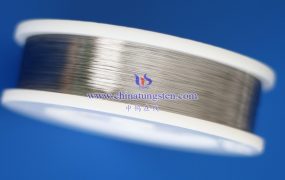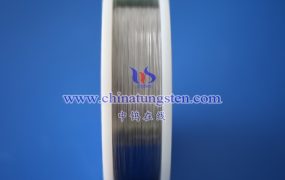The production process of tungsten wire for textiles weaving gloves may have some impact on the environment, mainly including the following aspects:
- Energy consumption
Impact:
High temperature processing: The production of tungsten wire requires high temperature treatment, such as melting of tungsten, stretching of tungsten wire, etc. These processes consume a lot of energy (mainly electricity).
Energy consumption: High energy consumption may lead to increased greenhouse gas emissions.
Management:
Energy-saving measures: Use high-efficiency equipment and processes to reduce energy consumption.
Energy management: Optimize production processes and reduce energy waste.

- Waste gas emissions
Impact:
Harmful gases: In the production process of tungsten wire, especially during high-temperature treatment, some harmful gases may be released, such as tungsten compounds, fluorides, etc.
Air pollution: These waste gases may affect air quality.
Management:
Waste gas treatment: Install efficient waste gas treatment equipment, such as dust collectors and gas purification devices.
Emission standards: Follow national and regional waste gas emission standards to reduce the impact on the environment.
- Solid waste
Impact:
Production waste: Some solid wastes are generated during the production process, such as scraps, scraps, damaged products, etc.
Waste treatment: If these solid wastes are not properly handled, they may pollute the soil and water sources.
Management:
Waste recycling: Recycle and reuse production waste as much as possible to reduce waste generation.
Compliance treatment: Dispose of solid waste in accordance with the prescribed waste treatment procedures to avoid impact on the environment.

- Use of water resources
Impact:
Cooling water: A large amount of cooling water may be required during the production process, affecting the use of water resources.
Wastewater discharge: Wastewater generated during the production process may contain pollutants, such as chemicals and sediments.
Management:
Water recycling: Use a water recycling system to reduce the consumption of fresh water resources.
Wastewater treatment: Effectively treat production wastewater to ensure that wastewater discharge meets environmental protection standards.
- Use of chemicals
Impact:
Chemical discharge: Various chemicals may be used in the production process, such as lubricants, cleaning agents, etc. If these chemicals are not properly handled, they will pollute the environment.
Management:
Safe use: Use and store chemicals reasonably to reduce the impact on the environment.
Waste management: Properly handle chemical waste to avoid leakage and pollution.

- Noise pollution
Impact:
Production noise: The operation of production equipment may generate noise and affect the surrounding environment.
Management:
Noise control: Use noise control measures such as sound insulation materials and equipment maintenance to reduce noise pollution.
- Occupational health and safety
Impact:
Production safety: High temperature, high pressure and chemical use in the production process may pose a risk to workers’ health.
Management:
Safety training: Provide employees with safe operation training and provide necessary personal protective equipment.
Safety standards: Comply with occupational health and safety standards to ensure a safe production environment.

More details of tungsten wires, please visit website: http://tungsten.com.cn/tungsten-wires.html
Please contact CHINATUNGSTEN for inquiry and order of tungsten needles:
Email: sales@chinatungsten.com
Tel.: +86 592 5129595






